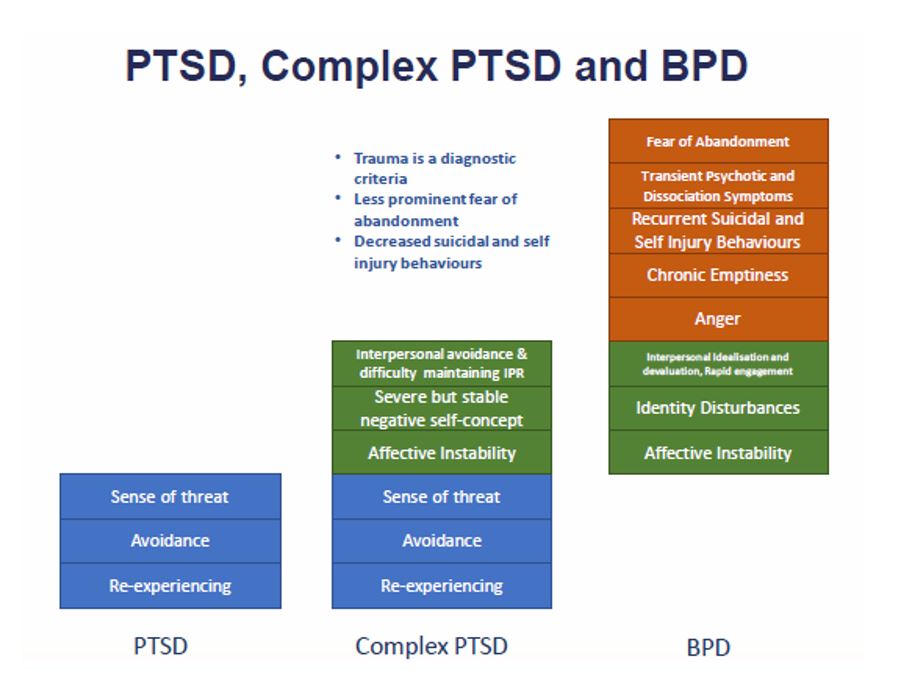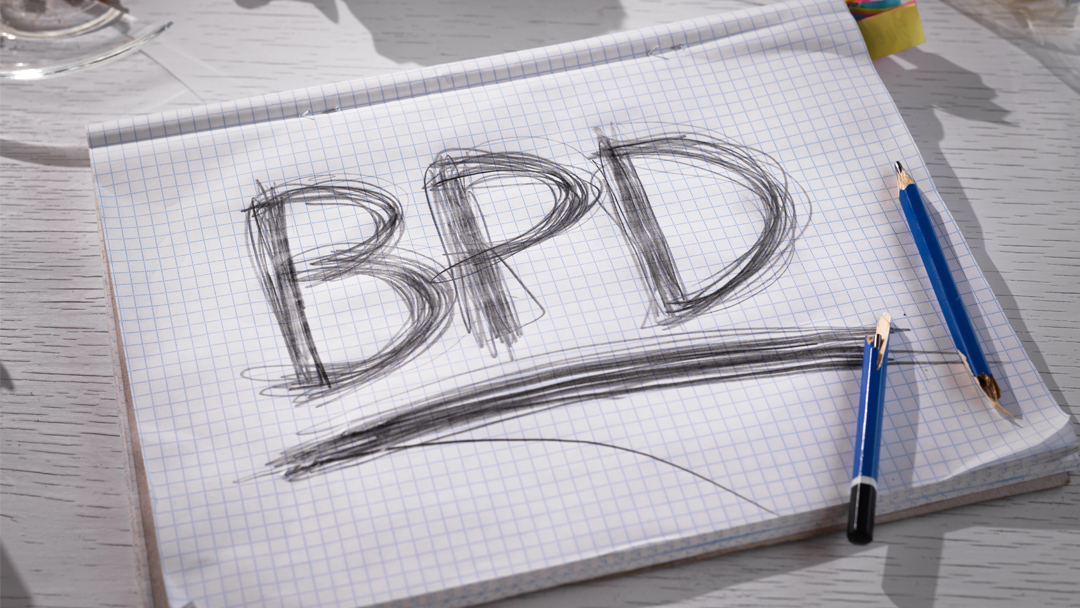Borderline Personality Disorder (BPD) is a diagnosis listed in the DSM 5, but is not listed as a trauma disorder. Instead it is placed with the personality disorders. Despite this, research has shown that childhood trauma is a significant risk factor in the development of BPD, along with a genetic predisposition and temperament (Bozzatello, Rocca, Baldassarri, Bosia, & Bellino, 2021).
BPD Symptoms
A diagnosis typically required at least five of these symptoms.
*Note, I have re-worded the criteria for ease of understanding. The following are not to be used for diagnostic purposes.
- Frantic Efforts to Avoid Abandonment – This includes both real and imagined scenarios of abandonment.
- Unstable and Intense Relationships – Alternating between extremes of idealising someone for a period of time then thinking they are worst.
- Identity Disturbance – Significant shifts in your sense of self or identity, leading to feelings of confusion or uncertainty about who you are. This can manifest as a lack of continuity in self-image, values, goals, or interests
- Impulsivity in At Least Two Areas – These areas are potentially self-damaging, such as spending too much money, sex, substance abuse, reckless driving, and binge eating.
- Recurrent Suicidal Behavior or Self-Harming Behaviour – Such as suicidal threats or attempts, or self-harming.
- Affective Instability – Difficulty managing emotions, big fluctuations in mood.
- Chronic Feelings of Emptiness
- Inappropriate, Intense Anger or Difficulty Controlling Anger – Often losing your temper at others, constant anger, or physical fights.
- Transient, Stress-Related Paranoid Ideation or Severe Dissociative Symptoms – For example, being paranoid others are talking about you behind your back. Examples of dissociation include depersonalisation, derealisation and amnesia.

Image source: BPD Foundation
BPD and CPTSD – are they the same disorder or are they distinct?
BPD has symptom overlap with Complex Post Traumatic Stress Disorder (CPTSD) (you can read about CPTSD in An Essential Complex Trauma Guide), with the addition of the symptoms – intense emotions, unstable relationships, suicidal thoughts and/or self-harm, a feeling of emptiness, fear of abandonment and intense anger. There is ongoing debate as to whether CPTSD and BPD are different manifestations of the same underlying trauma, whereas others argue for the distinct differences between the two and believe they should be separate diagnoses.
I am Borderline
I Am Borderline was written/directed/produced by Dr. Betsy Usher, cinematographer was Thom Kuo. I Am Borderline was written reducing the stigma of Borderline Personality Disorder. I Am Borderline went viral and reached over 1 millions views, was in 16 film festivals, and won the Art With Impact Award in 2016. The title was created as a campaign to help show that those with BPD are more than their diagnosis. They are mothers, teachers, doctors, friends, daughter, sons, therapists, artists, and so much more.
Video source: Dr Betty Usher
References
Bozzatello P, Rocca P, Baldassarri L, Bosia M and Bellino S (2021). The Role of Trauma in Early Onset Borderline
Personality Disorder: A Biopsychosocial Perspective. Front. Psychiatry, 12:721361. doi: 10.3389/fpsyt.2021.721361
Read more
Take the First Step Towards Healing
If you're struggling with complex trauma, don't face it alone. Contact me today and start your journey to trauma recovery.
Healing Through Connection Exploring Melissa Harte’s Expanded Focusing Task for Trauma
I am honoured to bring a deeply meaningful approach to our work together—a method I learned directly from my own psychologist and mentor, the late Melissa Harte. Melissa was not only an expert in Emotion-Focused Therapy (EFT) but also developed what she called the...
Why Emotion-Focused Therapy Believes Emotions Come First in Trauma Healing
In the world of psychology, it’s often said that changing your thoughts will lead to emotional change. This is the basis of Cognitive Behavioral Therapy (CBT), which says that by shifting our thoughts, we can influence how we feel. But what if emotions come first,...
Exploring Betrayal Trauma
Betrayal trauma (Freyd, 1994) happens when the people who are supposed to care for us as children, such as parents, cause deep emotional harm by betraying out trust. In this article, I will focus on betrayal trauma within the parent-child relationship, though similar...




